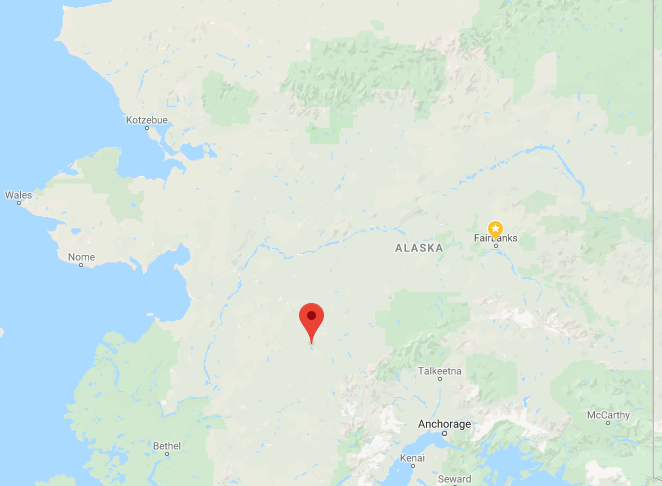Quick Facts
- Pronounced (muh-GRATH)
- Current Population 343 (2012 Alaska Department of Labor Estimate)
- Legislative Districts (link to State Legislature page):
- Senate District S
- House District 38
- Judicial District 4
- Latitude: 62.9564
- Longitude: -155.5958

Location
McGrath is located 221 miles northwest of Anchorage and 269 miles southwest of Fairbanks in Interior Alaska. It is adjacent to the Kuskokwim River, directly south of its confluence with the Takotna River.
Climate
The McGrath area has a cold, continental climate. Average summer temperatures range from 62 to 80 °F, and winters temperatures can range from -64 to 0 °F. Annual precipitation is light, averaging 10 inches per year, with an average snowfall of 86 inches. The Kuskokwim River is generally ice-free from June through October.
History
McGrath was a seasonal Upper Kuskokwim Athabascan village that was used as a meeting and trading place for Big River, Nikolai, Telida, and Lake Minchumina residents. The Old Town McGrath site was originally located across the river. In 1904, Abraham Appel established a trading post at the old site. In 1906, gold was discovered in the Innoko District and at Ganes Creek in 1907. Since McGrath is the northernmost point on the Kuskokwim River accessible by large riverboats, it became a regional supply center. By 1907, a town was established and named for Peter McGrath. In 1909, the Alaska Commercial Company opened a store.
The Iditarod Trail also contributed to McGrath’s role as a supply center. From 1911 to 1920, hundreds of people walked and mushed over the trail on their way to the Ophir gold districts. Mining sharply declined after 1925. After a major flood in 1933, some residents decided to move to the south bank of the river. Changes in the course of the river eventually left the old site on a slough, useless as a river stop. In 1937, the Alaska Commercial Company opened a store at the current location. In 1940, an airstrip was cleared, the FAA built a communications complex, and a school was opened.
McGrath became an important refueling stop during World War II as part of the Lend-Lease Program between the U.S. and Russia. In 1964, a new high school was built, attracting boarding students from nearby villages. The city was incorporated in 1975. The federally recognized Tribe in McGrath was established in 1993.
Culture
Slightly more than half of the population are Athabascans and Eskimos. As a regional center, McGrath offers a variety of employment opportunities, but subsistence remains an important part of the local culture.
Community profile data provided by the State of Alaska Department of Commerce, Community and Economic Development.
